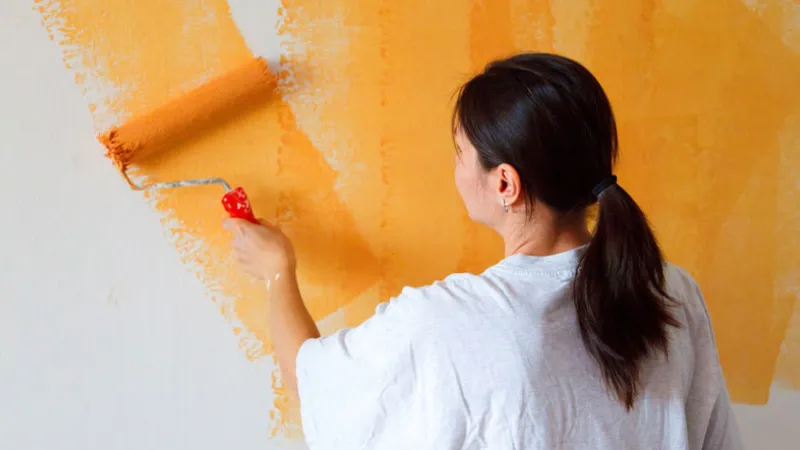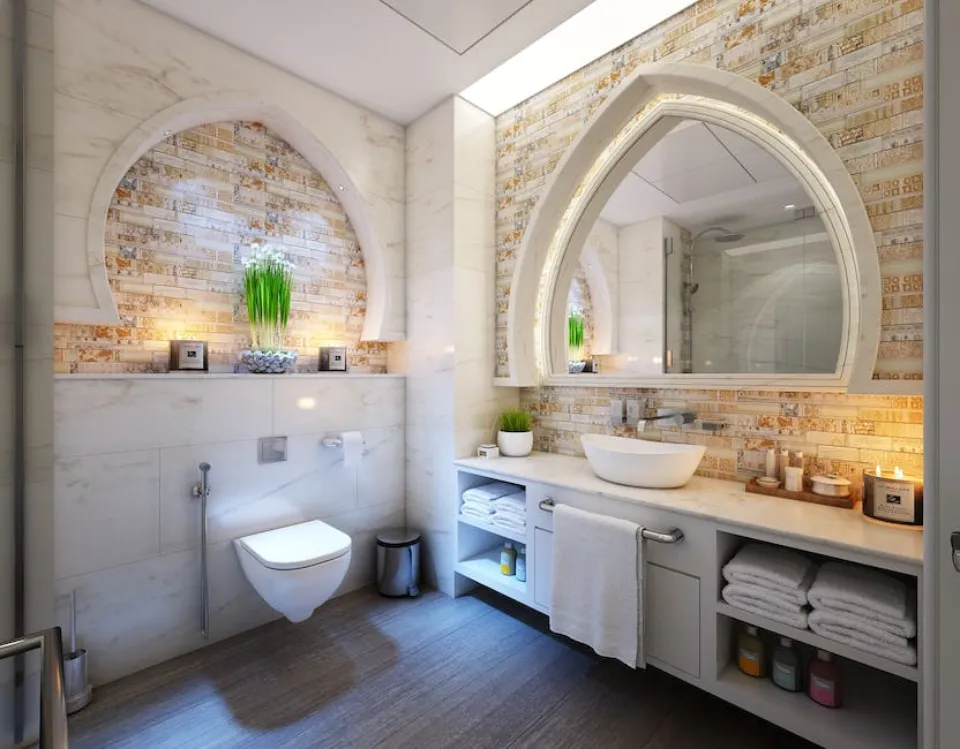‘How long does it take to paint a room?‘ is a question every DIY decorators should think carefully before using a paintbrush or roller.
Depending on the size, level of detail, and number of coats you want to use, painting a room will take a specific amount of time. Larger rooms typically take longer to clean than smaller ones, as you might anticipate.
Here is a breakdown of the painting process, including how long each step typically takes.
Time to Paint a Room
- Setting Up: 1-2 hours
- Outlining: 1 hour
- Painting: 2-3 hours
- Clea Up: 30-60 minutes
Breakdown of How Long It Takes to Paint a Room
Setting Up: 1 to 2 Hours
Getting a room ready is the first step in painting it. Moving furniture away from walls, covering the floor to prevent paint spills, taking down wall fixtures and other objects that are hanging, and taping baseboards and picture frames with painter’s tape are some examples of what needs to be done. Numerous people believe they can simply jump in and begin painting, but this is a surefire way to produce a subpar and hurried paint job.
Initial preparation can take anywhere from one to two hours, depending on how big the room is. The process will probably take the longest when objects are taken off the walls and painter’s tape is put down.
Outlining: 1 Hour
You can start painting once everything has been prepared. Outlining the areas that the roller cannot effectively reach is the first step. The corners, edges, and vicinity of sidings are included in this. The more painting experience you have, the quicker and easier this process should be.
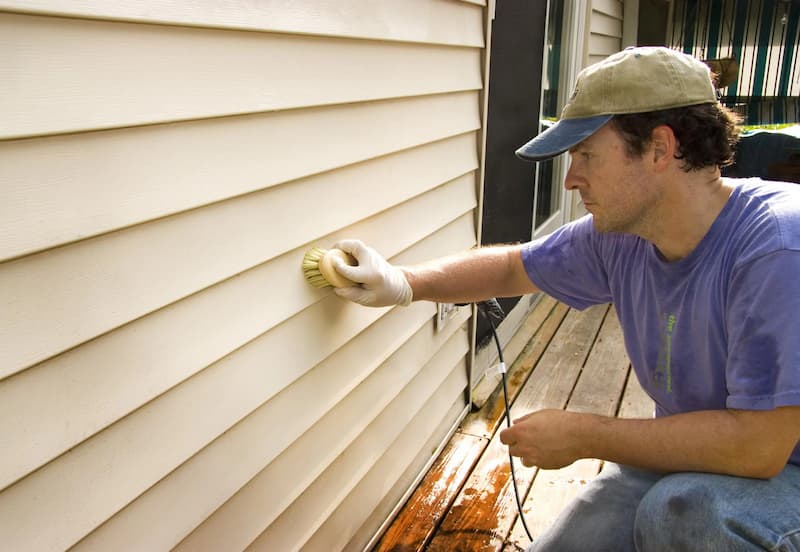
Tips to Make the Outlining Process Go Smoother
- Avoid using a ladder to access high areas. Replace it with a bench with a flat platform. You can get more coverage this way without having to move around as much.
- Use a paintbrush that has bristles that are angled. Inaccessible areas like between fixtures or in corners will be simpler to access as a result.
- Make heavy use of painter’s tape. It does not require much time to apply and can help keep your lines straight.
- A strong paint cap with handles is a must. As a result, you won’t need to constantly climb up and down to apply paint again.
Painting: 2 to 3 Hours
The primary draw is about to begin. While it will take the longest amount of time to complete, painting the majority of the walls is also the step that is simplest and most straightforward. You don’t need to worry about accuracy too much until you are painting in close proximity to baseboards and edges because you are painting large, open spaces.
If you want the process of painting the room to go even faster, getting a large roller between 14″-18″ will help you. To reach higher open wall sections, you should also think about making a purchase of an extension rod. The process can go much more smoothly and the amount of time spent painting can be greatly decreased with the right tools.
Try to apply paint in layers. Complete the area with a solid layer at first, then apply another coat over the area. This layering technique will guarantee that the paint color is uniform when it dries and that some areas won’t look dull in comparison to other areas.
The length of the actual painting process can range from two to three hours, depending on the size of the room. More practice and quicker results come from painting more frequently.
Clean Up: 30 to 60 Minutes
The final stage is the most relaxed. Once you’ve finished painting the room, it’s time to tidy up. Tarps and other ground coverings should be cleaned up, paint cans should be sealed, and paint should be stored. It’s best to wait about 48 hours for the paint to completely dry before hanging pictures and fixtures back up, despite the temptation to just go ahead and do it. Waiting to hang things can cause the paint to crack and dry unevenly, even if it feels dry right away after painting. The entire cleanup procedure ought to take no longer than an hour, if not less.
Suggested reading: One of the best ways to quickly improve the appearance and ambiance of a space where you probably spend a lot of time is by updating your kitchen cabinets. So, how much does it cost to paint kitchen cabinets?
Other Considerations
How Big is the Room?
Of course, depending on how much ground you need to cover, preparing and painting a room will take longer or shorter. Naturally, painting a bigger room takes longer than painting a smaller one. The National Home Builder Association estimates that the typical bedroom has a square footage of 432. The entire process, from preparation to cleanup, ought to take an average painter about 4-6 hours for a room this size. By using professionals, you can reduce this time in half.
The Whole Room, Or Part of It?
The size of the room is important, but the surface you’re actually painting is more important. In other words, you might not be painting the entire room—just a portion of it. This will significantly reduce the amount of time required for residential painting, if you’re not painting the ceiling or a particular wall, for example.
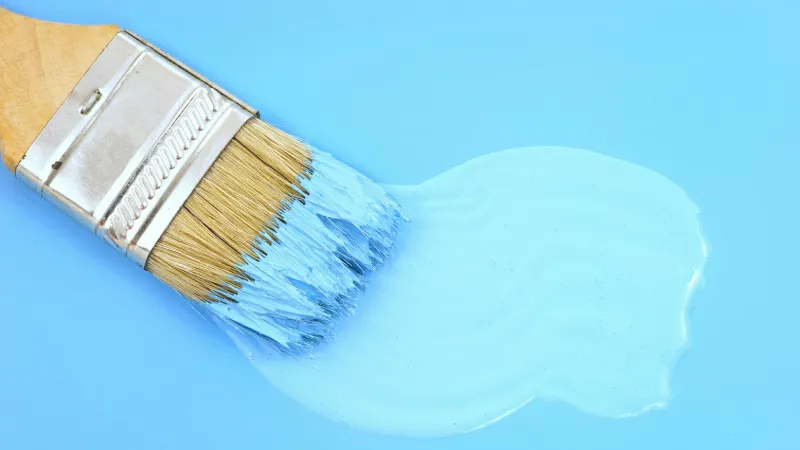
What Colour Are You Using?
Painting time will vary depending on the color you choose because not all paint colors are created equal. It matters what color you are covering with paint as well. You will need to spend more time priming your surface if, for instance, you want to paint over a dark wall with a light color.
Application Method Matters
The time it takes to paint a room can also depend on the painting equipment you use. Applying with a brush, rolling a surface, and spraying are the three primary techniques. Spraying is typically used for exteriors and industrial surfaces rather than interior rooms, despite the fact that it may be the quickest method. Brushes and rollers are typically used for interior painting. The most effective way to paint a room is typically to use rollers to quickly cover the large open surfaces and brushes to quickly cut in the edges of walls and trim.
How Many Coats Will You Need?
You will only need one coat if you are simply touching up the paint already in the room. You’ll need two or more if you’re painting the entire wall. The initial coat will take the most time, about an hour. The second coat should be painted in about 45 minutes, and it will ensure that the final color is vibrant and that any surface flaws are hidden.
Remember that you must give the paint enough time to completely dry in between coats. How long you’ll need to wait depends on the type of paint you’re using:
- If using water-based (latex) paint, wait two to four hours between coats
- If using oil-based paint, wait a full 24 hours between coats
Too soon after applying the first coat, using a roller, could cause the first coat to pull. This might result in obtrusive streaks, peeling, and uneven color.
Cleaning and Touching Up, Too
The total time needed to paint a room should take into account preparation time as well as cleaning and touch-up time. This last step can take an additional hour or so if you’re working alone. It might only take half as long with a crew. Cleaning up for professional painting services usually takes little time because they have their process down pat.
Can a Room Be Painted in One Day?
Yes, you can paint a room in a single day, but it will depend on the paint you’re using. For maximum effectiveness, you should also consider the order in which you should paint the room. In order to proceed, you might have to wait for the paint to dry.
It takes much less time to recoat because water-based paints dry much faster than oil-based paints. to complete a room in a single day. Start by applying one coat each to the walls, woodwork, and ceiling.
The ceiling and woodwork will be prepared for a second coat by the time you’ve finished painting the last wall. When finished, begin on the wall without any woodwork. After painting the woodwork, paint the wall next to it. For example, if you painted a door frame first when painting the woodwork, paint this wall as this would have had the longest drying time. However, never try to apply a second coat to a surface that hasn’t fully dried because you’ll ruin the paintwork and have to sand back and start over.
Do You Paint Walls Or Trim First?
The ceiling is the first surface you paint in the room. When you’re done with that, you should consider painting the windows, doors, skirting boards, and any other trim that may be present.
The final coat usually comes down to choosing between satin and gloss. These are simpler to clean up any stray emulsion from, and in my opinion, cutting in walls is simpler than the opposite.
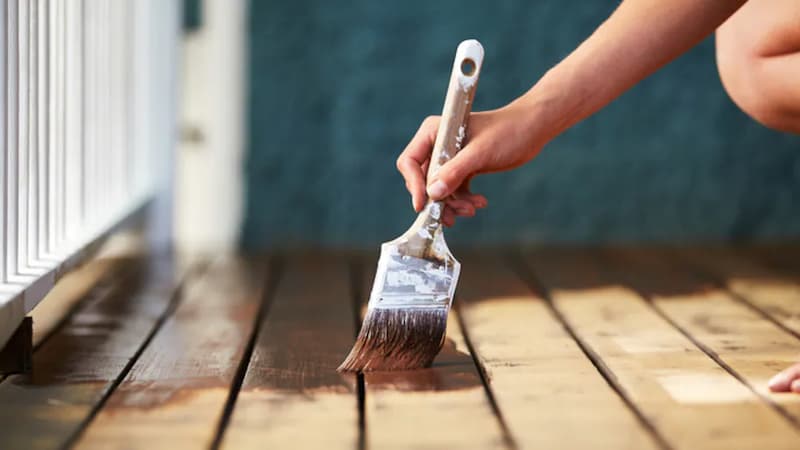
FAQs
How Many Times Can You Repaint a Wall?
In reality, as often as you like. You can paint as often as you’d like if the paint has been applied correctly and is in good condition. It is important that you are preparing walls for painting properly. Simply sand down any paint buildup. Use a paint scraper to remove any flaking and sand the edges smooth if necessary.
How Much Does a Painter Charge Per Hour?
An hourly rate for a painter and decorator will be between 20 and 25 pounds. Although there may be cheaper options, this represents the average cost outside of London. Day rates are around $200+, and a room should cost at least $400. Walls, ceilings, and woodwork would all be included in this two-day project.
READ ABOUT How Long Does Latex Paint Take to Dry?
Summary: How Long Does It Take to Paint a Room?
Painting a room takes, on average, 5 to 7 hours. The time spent preparing the room for painting, finishing touches, and cleanup is included in this estimate for a 120 square foot room on average. You can easily paint a room in one day if you prepare.
Please post a question in the comments if you have any.
